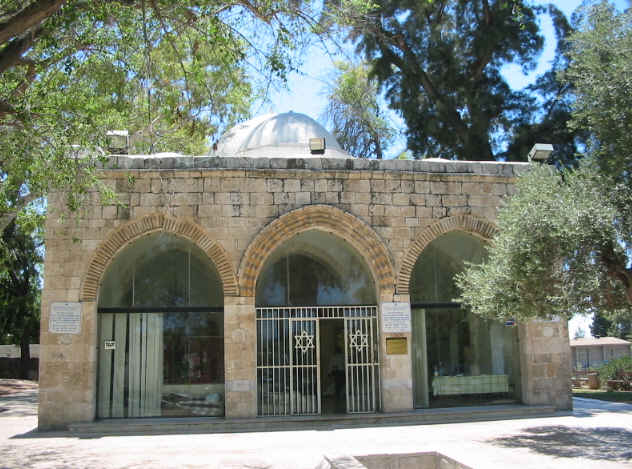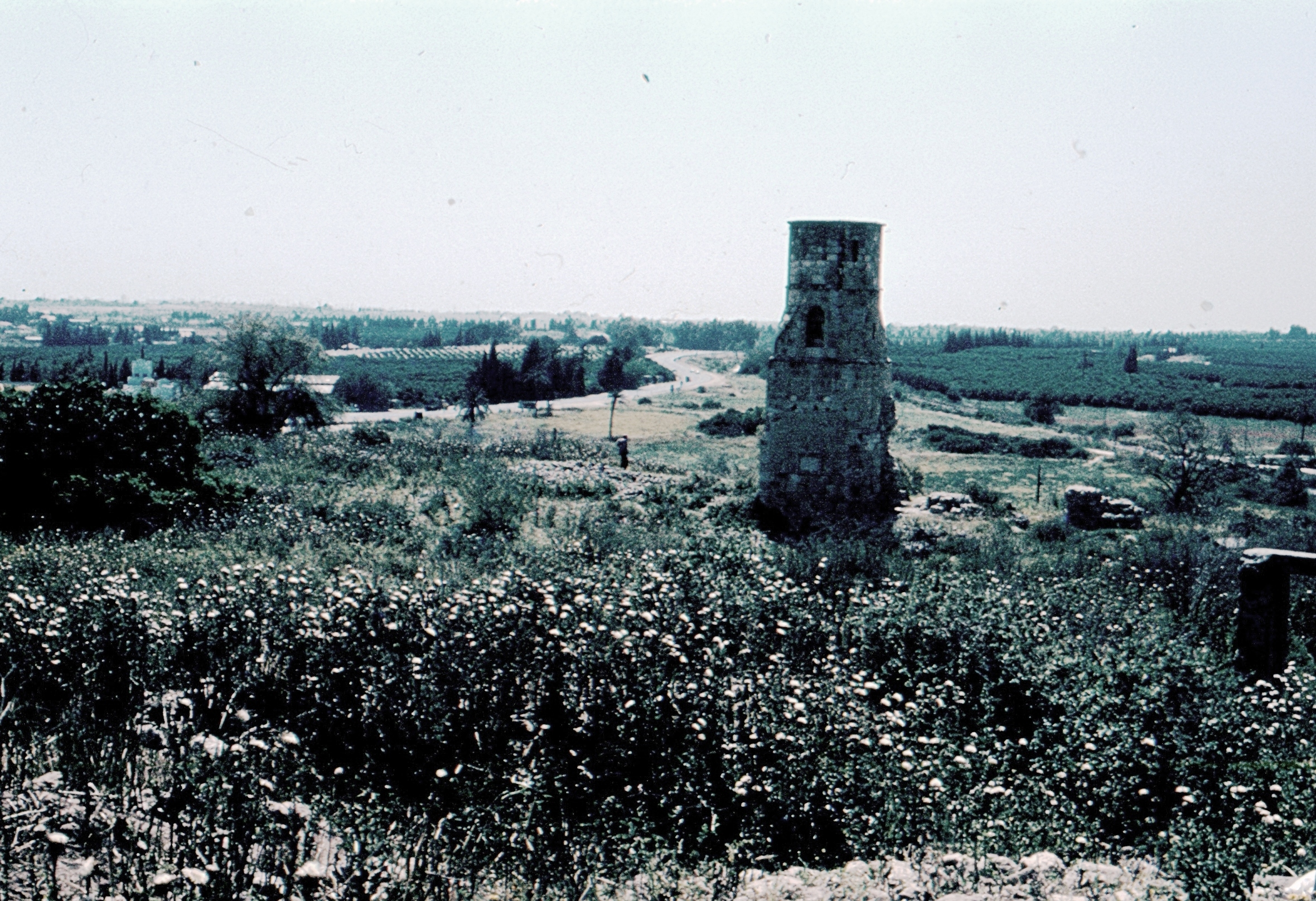|
Joshua Ben Hananiah
Joshua ben Hananiah ( ''Yəhōšūaʿ ben Ḥănanyā''; d. 131 CE), also known as Rabbi Yehoshua, was a leading tanna of the first half-century following the destruction of the Second Temple. He is the eighth-most-frequently mentioned sage in the Mishnah. Biography He was of Levitical descent, and served in the sanctuary as a member of the class of singers. His mother intended him for a life of study, and, as an older contemporary, Dosa ben Harkinas, relates, she carried the child in his cradle into the synagogue, so that his ears might become accustomed to the sounds of the words of the Torah. It was probably with reference to his pious mother that Yohanan ben Zakkai thus expressed himself concerning Joshua ben Hananiah: "Hail to thee who gave him birth".Pirkei Avot 2:8 According to another tradition Yohanan ben Zakkai praised him in the words of Ecclesiastes (4:12), "And a threefold cord is not quickly broken." Perhaps he meant that in Joshua the three branches of tradition ... [...More Info...] [...Related Items...] OR: [Wikipedia] [Google] [Baidu] |
Tannaim
''Tannaim'' ( Amoraic Hebrew: תנאים "repeaters", "teachers", singular ''tanna'' , borrowed from Aramaic) were the rabbinic sages whose views are recorded in the Mishnah, from approximately 10–220 CE. The period of the Tannaim, also referred to as the Mishnaic period, lasted about 210 years. It came after the period of the Zugot "Pairs" and was immediately followed by the period of the Amoraim "Interpreters". The root ''tanna'' () is the Aramaic equivalent of the Hebrew root ''shanah'' (), which also is the root word of ''Mishnah''. The verb ''shanah'' means "to repeat hat one was taught and is used to mean "to learn". The Mishnaic period is commonly divided into five periods according to generations. There are approximately 120 known Tannaim. The Tannaim lived in several areas of the Land of Israel. The spiritual center of Judaism at that time was Jerusalem, but after the destruction of the city and the Second Temple, Yohanan ben Zakkai and his students founded a n ... [...More Info...] [...Related Items...] OR: [Wikipedia] [Google] [Baidu] |
Aggadah
Aggadah (, or ; ; 'tales', 'legend', 'lore') is the non-legalistic exegesis which appears in the classical rabbinic literature of Judaism, particularly the Talmud and Midrash. In general, Aggadah is a compendium of rabbinic texts that incorporates folklore, historical anecdotes, moral exhortations, and practical advice in various spheres, from business to medicine. Etymology The Hebrew word () is derived from the Hebrew root , meaning "declare, make known, expound", also known from the common Hebrew verb .Berachyahu Lifshitz, "Aggadah Versus Haggadah : Towards a More Precise Understanding of the Distinction", ''Diné Yisrael'' 24 (2007): page 23 (English section). The majority scholarly opinion is that the Hebrew word ''aggadah'' () and corresponding Aramaic ''aggadta'' (אֲגַדְתָּא) are variants of ''haggadah'' based on a common linguistic shift from ''haphalah'' to ''aphalah'' forms. However, a minority of scholars believe that these words derive from a separate Ar ... [...More Info...] [...Related Items...] OR: [Wikipedia] [Google] [Baidu] |
Gamaliel II
Rabban Gamaliel II (also spelled Gamliel; ; before –) was a rabbi from the second generation of tannaim. He was the first person to lead the Sanhedrin as '' nasi'' after the fall of the Second Temple in 70 CE. He was the son of Shimon ben Gamaliel, one of Jerusalem's foremost men in the war against the Romans, and grandson of Gamaliel I. To distinguish him from the latter he is also called Gamliel of Yavne. Biography He seemed to have settled initially in Kefar 'Othnai in Lower Galilee, but with the outbreak of the war with Rome, he fled to Jerusalem. From there, he moved to Yavne. In Yavne, during the siege of Jerusalem, the scribes of the school of Hillel had taken refuge by permission of Vespasian, and a new centre of Judaism arose under the leadership of the aged Johanan ben Zakkai, a school whose members inherited the authority of the Sanhedrin of Jerusalem. He was appointed ''nasi'' in approximately the year 80 CE. Leadership Gamaliel II became Johanan ben Zak ... [...More Info...] [...Related Items...] OR: [Wikipedia] [Google] [Baidu] |
Vespasian
Vespasian (; ; 17 November AD 9 – 23 June 79) was Roman emperor from 69 to 79. The last emperor to reign in the Year of the Four Emperors, he founded the Flavian dynasty, which ruled the Empire for 27 years. His fiscal reforms and consolidation of the empire brought political stability and a vast building program. Vespasian was the first emperor from an Equestrian (Roman), equestrian family who rose only later in his lifetime into the Roman Senate, senatorial rank as the first of his family to do so. He rose to prominence through military achievement: he served as legatus, legate of Legio II Augusta during the Roman invasion of Britain in 43, and later led the suppression of the First Jewish–Roman War, Jewish rebellion of 66–70. While he was engaged in the campaign in Judaea (Roman province), Judaea, Emperor Nero died by suicide in June 68, plunging Rome into a year of civil war known as the Year of the Four Emperors. After Galba and Otho perished in quick succession, V ... [...More Info...] [...Related Items...] OR: [Wikipedia] [Google] [Baidu] |
Hagigah
Hagigah or Chagigah () is one of the tractates comprising Moed, one of the six orders of the Mishnah, a collection of Jewish traditions included in the Talmud. It deals with the Three Pilgrimage Festivals of Passover, Shavuot, and Sukkot and the pilgrimage offering that men were supposed to bring to the Temple in Jerusalem. In the middle of the second chapter, the text discusses topics of ritual purity. The tractate contains three chapters, spanning 27 pages in the Vilna Edition Shas of the Babylonian Talmud, making it relatively short. The second chapter contains much early aggadah, discussing the Genesis creation narrative and early merkabah mysticism. Its content is relatively light and uncomplicated except for the third chapter. References External links Mishnah Chagigah text in Hebrew [...More Info...] [...Related Items...] OR: [Wikipedia] [Google] [Baidu] |
Hagiographa
The (; ) is the third and final section of the Hebrew Bible, after the ("instruction") and the "Prophets". In English translations of the Hebrew Bible, this section is usually titled "Writings" or "Hagiographa". In the Ketuvim, 1–2 Chronicles form one book as do Ezra and Nehemiah which form a single unit entitled Ezra–Nehemiah. (In citations by chapter and verse, however, the Hebrew equivalents of "Nehemiah", "I Chronicles" and "II Chronicles" are used, as the system of chapter division was imported from Christian usage.) Collectively, eleven books are included in the Ketuvim. Groups of books ''Sifrei Emet'' In Masoretic manuscripts (and some printed editions), Psalms, Proverbs and Job are presented in a special two-column form emphasizing the parallel stichs in the verses, which are a function of their poetry. Collectively, these three books are known as Sifrei Emet ( – an acronym of the titles of the three books in Hebrew, , , yields e''m''''et'', "truth"). ... [...More Info...] [...Related Items...] OR: [Wikipedia] [Google] [Baidu] |
Nevi'im
The (; ) is the second major division of the Hebrew Bible (the ''Tanakh''), lying between the () and (). The Nevi'im are divided into two groups. The Former Prophets ( ) consists of the narrative books of Joshua, Judges, Samuel and Kings; while the Latter Prophets ( ) include the books of Isaiah, Jeremiah, Ezekiel, and the Twelve Minor Prophets. Synopsis The Jewish tradition counts eight books in ''Nevi'im'' out of twenty-four books in the Hebrew Bible. There are four books of the Former Prophets, including Joshua and Judges, and the collected ''Books of Samuel'' and ''Books of Kings'' are each counted as one book. Among the four books of the Latter Prophets, Isaiah, Jeremiah, and Ezekiel account for three books, followed by the "Twelve" (: Hosea, Joel, Amos, Obadiah, Jonah, Micah, Nahum, Habakkuk, Zephaniah, Haggai, Zechariah, and Malachi), which is counted as a single book. The development of the Hebrew Bible canon placed the Book of Daniel as part of the "Writi ... [...More Info...] [...Related Items...] OR: [Wikipedia] [Google] [Baidu] |
Elisha Ben Abuyah
Elisha ben Abuyah () (spelled variously, including Elisha ben Avuya) was a rabbi and Jewish religious authority born in Jerusalem sometime before 70 CE. After he adopted a worldview considered heretical by his fellow '' Tannaim'', the rabbis of the Talmud refrained from relating teachings in his name and referred to him as the "Other One" (, ). In the writings of the Geonim this name appears as "Achor" ("backwards"), because Elisha was considered to have "turned backwards" by embracing heresy. Youth and activity Little is known of Elisha's youth and of his activity as a teacher of Jewish Law. He was the son of a rich and well-respected citizen of Jerusalem, and was trained for the career of a scholar. The only saying of his recorded in the Mishnah is his praise of education: "Learning Torah as a child is like writing on fresh paper, but learning Torah in old age is like writing on a palimpsest." Other sayings attributed to Elisha indicate that he stressed '' mitzvot'' (commandme ... [...More Info...] [...Related Items...] OR: [Wikipedia] [Google] [Baidu] |
Eliezer Ben Hurcanus
Eliezer ben Hurcanus (or Hyrcanus) () was one of the most prominent Judean ''tannaitic'' Sages of 1st- and 2nd-century Judaism, a disciple of Rabban Yohanan ben Zakkai, Avot of Rabbi Natan 14:5 and a colleague of Gamaliel II (whose sister, Ima Shalom, he married) and Joshua ben Hananiah.''Pirkei Abot'' 2:8 He is the sixth most frequently mentioned Sage in the Mishnah. Biography Introduction to Torah Hyrcanus was a member of the Jewish priestly class, the '' kohanim''. His earlier years are known only through legend; it may be inferred that he was somewhat older when a desire to study Torah first compelled him—contrary to the wishes of his father—to desert his regular occupation and depart for Jerusalem to devote himself to his studies. In Jerusalem, he entered the academy of Rabban Yochanan ben Zakkai and for years studied diligently despite having to cope with great privations. It was said that sometimes, days elapsed during which he went without eating. Ben Zakka ... [...More Info...] [...Related Items...] OR: [Wikipedia] [Google] [Baidu] |
Berakhot (Talmud)
Berakhot (, lit. "Blessings") is the first tractate of '' Seder Zeraim'' ("Order of Seeds") of the Mishnah and of the Talmud. The tractate discusses the rules of prayers, particularly the Shema and the Amidah, and blessings for various circumstances. Since a large part of the tractate is concerned with the many ''berakhot'' (), all comprising the formal liturgical element beginning with the words "Blessed are you, Lord our God....", it is named for the initial word of these special form of prayer. ''Berakhot'' is the only tractate in ''Seder Zeraim'' to have Gemara – rabbinical analysis of and commentary on the Mishnah – in the Babylonian Talmud. There is however Jerusalem Talmud on all the tractates in ''Seder Zeraim''. There is also a Tosefta for this tractate. The Jewish religious laws detailed in this tractate have shaped the liturgies of all the Jewish communities since the later Talmudic period and continue to be observed by traditional Jewish communities until ... [...More Info...] [...Related Items...] OR: [Wikipedia] [Google] [Baidu] |
Tailor
A tailor is a person who makes or alters clothing, particularly in men's clothing. The Oxford English Dictionary dates the term to the thirteenth century. History Although clothing construction goes back to prehistory, there is evidence of tailor shops in Ancient Greece and Rome, as well as tailoring tools such as irons and shears. The profession of tailor in Europe became formalized in the High Middle Ages through the establishment of guilds. Tailors' guilds instituted a system of masters, journeymen, and apprentices. Guild members established rules to limit competition and establish quality standards. In 1244, members of the tailor's guild in Bologna established statutes to govern their profession and required anyone working as a tailor to join the guild. In England, the Statute of Artificers, passed in 1563, included the profession of tailor as one of the trades that could be entered only by serving a term of apprenticeship, typically seven years. A typical tailo ... [...More Info...] [...Related Items...] OR: [Wikipedia] [Google] [Baidu] |
Yibna
Yibna (; ''Jabneh'' or ''Jabneel'' in Biblical times; ''Jamnia'' in Roman empire, Roman times; ''Lordship of Ibelin, Ibelin'' to the Crusades, Crusaders), or Tel Yavne, is an archaeological site and List of villages depopulated during the Arab–Israeli conflict, depopulated Palestinian town. The ruins are located southeast of the modern Israeli city of Yavne. The town had a population of 5,420 in 1948, located 15 kilometers southwest of Ramla.Khalidi, 1992, p.421 Most of the population fled after the fall of al-Qubayba, Hebron, al-Qubeiba and Zarnuqa in late May, but armed males were forced back. Israeli army took the town on June 5 and expelled the remaining population. It is a significant site for post-biblical Jewish history, as it was the location of the Council of Jamnia, considered the birthplace of modern Rabbinic Judaism. It is also significant in the history of the Crusades, as the location of the House of Ibelin. Name In many English translations of the Bible, it is k ... [...More Info...] [...Related Items...] OR: [Wikipedia] [Google] [Baidu] |



